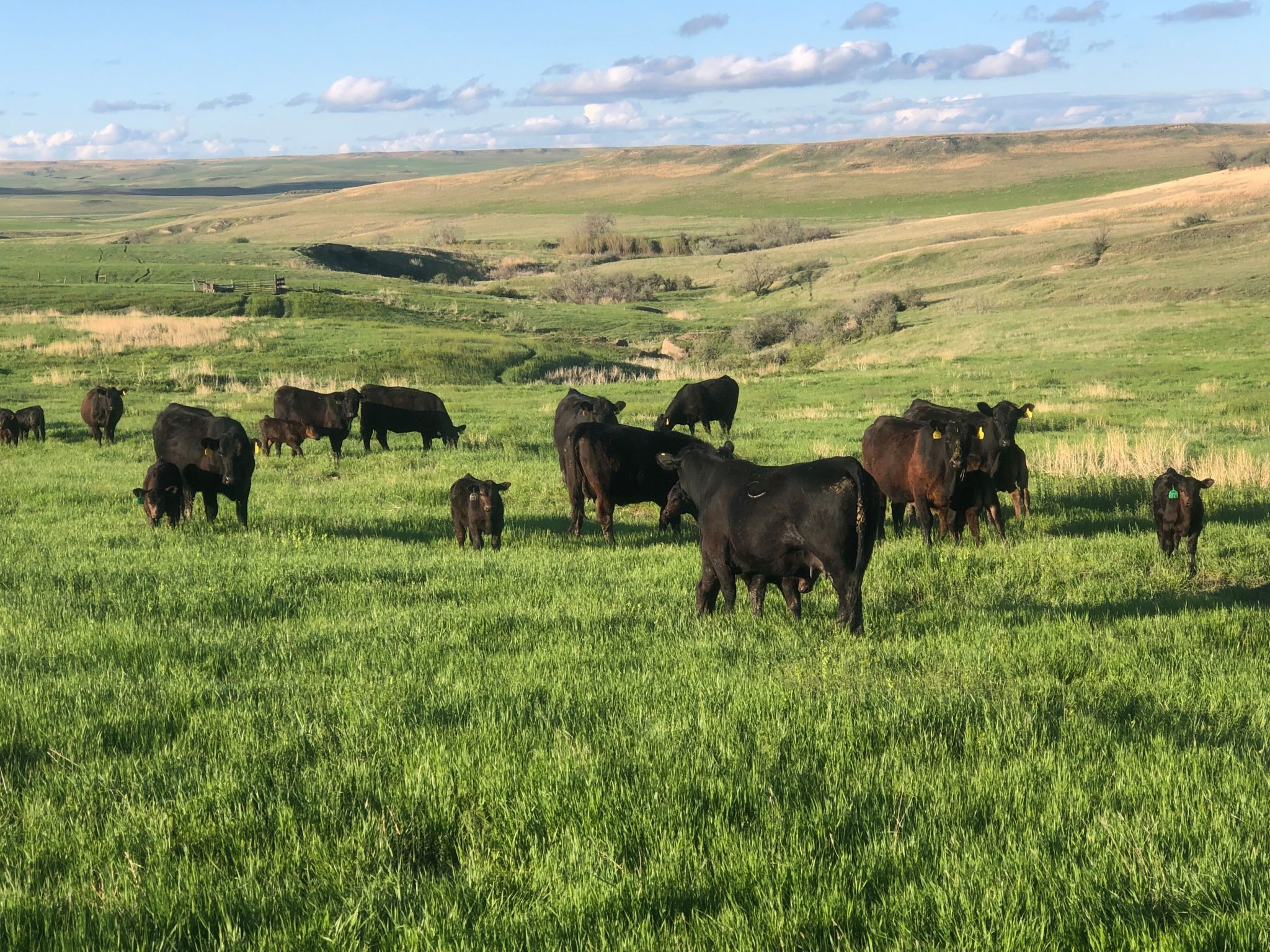Jenson Ranch Family
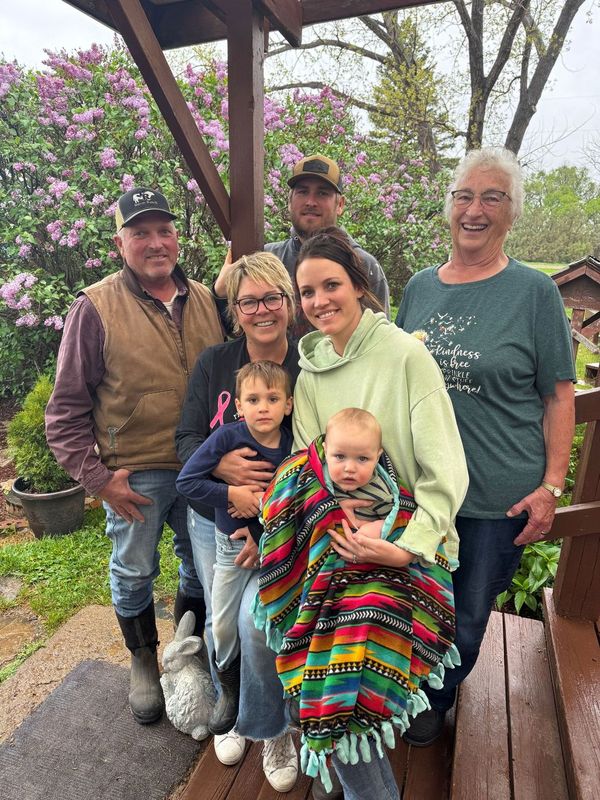
By Lura Roti for South Dakota Farmers Union
Ralph, South Dakota, had a general store, a post office, a Lutheran church, a cemetery and a school when Louise Jenson and her husband, Gene, were newly married and moved onto the ranch within eyesight of the Harding County village.
Sixty-three years later, Louise maintains the grounds around the now, mostly vacant buildings and cemetery.
Thankfully, even though Ralph is no more, the Jenson Ranch family is thriving. In addition to grounds maintenance, Louise spends quite a bit of time watching her great-grandchildren.
“It is just heaven,” explained Louise, of getting to help care for her seven great-grandchildren on the ranch – the children of her grandson, Jace and his wife, Kami, and her granddaughter, Amanda and her husband, Taz Olson. She also loves it when the five grandchildren of her son, Bill, visit.
“It is so rewarding to get to see the kids grow up and get to help them and be with the grandkids and have fun with them and follow them in sports and now to be involved with my great-grandkids and get to have them so close, almost like my own kids,” Louise said.
Kami agreed. “This is how I grew up and it is how I envisioned my life to be. A ranch is a good place to raise our children and there is lots of help.”
Kami is a cosmetologist and works off the ranch in her salon in Buffalo two days a week. She appreciates being able to leave their sons, Keen, 4 and Kage, 8 months, with her mom, Donella, Grandma Starla or Great-grandma Louise.
“Raising kids in this area and community, I don’t think you could do any better,” said Starla, who together with her husband, Ron, raised their four children on the ranch: Josi, Amanda, Jace and Jarett.
Today, Jace and Kami ranch with Ron and Starla, and their daughter, Amanda, and her husband, Taz, raise cattle on Taz’s family’s ranch just 10 miles north near Reva, South Dakota.
“I love the simplicity of ranch life,” explained Starla. “There is stress, but the stress is mostly connected to the weather.”
Today the family is in high spirits as they share the Jenson Ranch story. It’s May 15, and raining. Just two weeks earlier, the ranch received 2 inches of rain.
“Rain is what we need to make things grow and until recently, it has not rained much, and we did not get any winter moisture,” explained Ron, a fourth-generation Harding County rancher.
Ron explained that even with cross-fencing, rural water and a well-managed rotational grazing system, there is only so much man can do to support grassland health without rain.
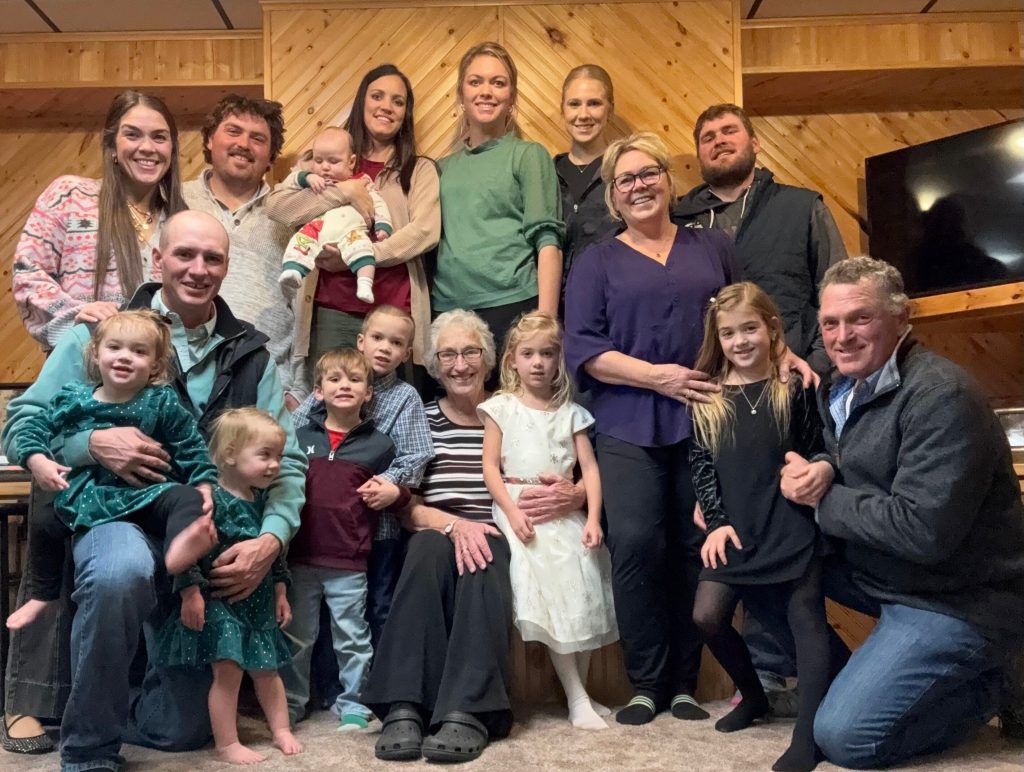
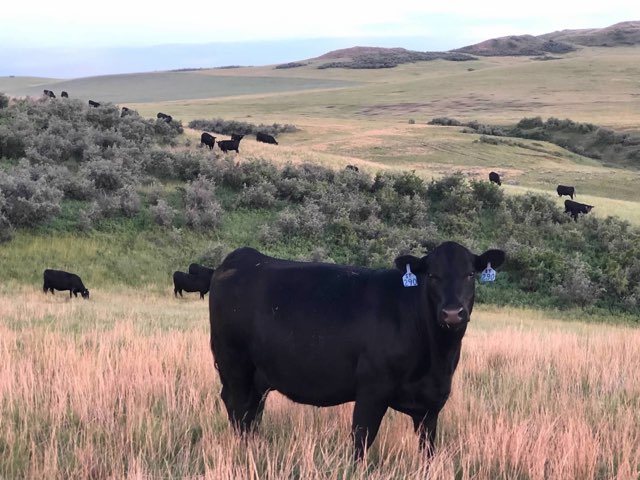
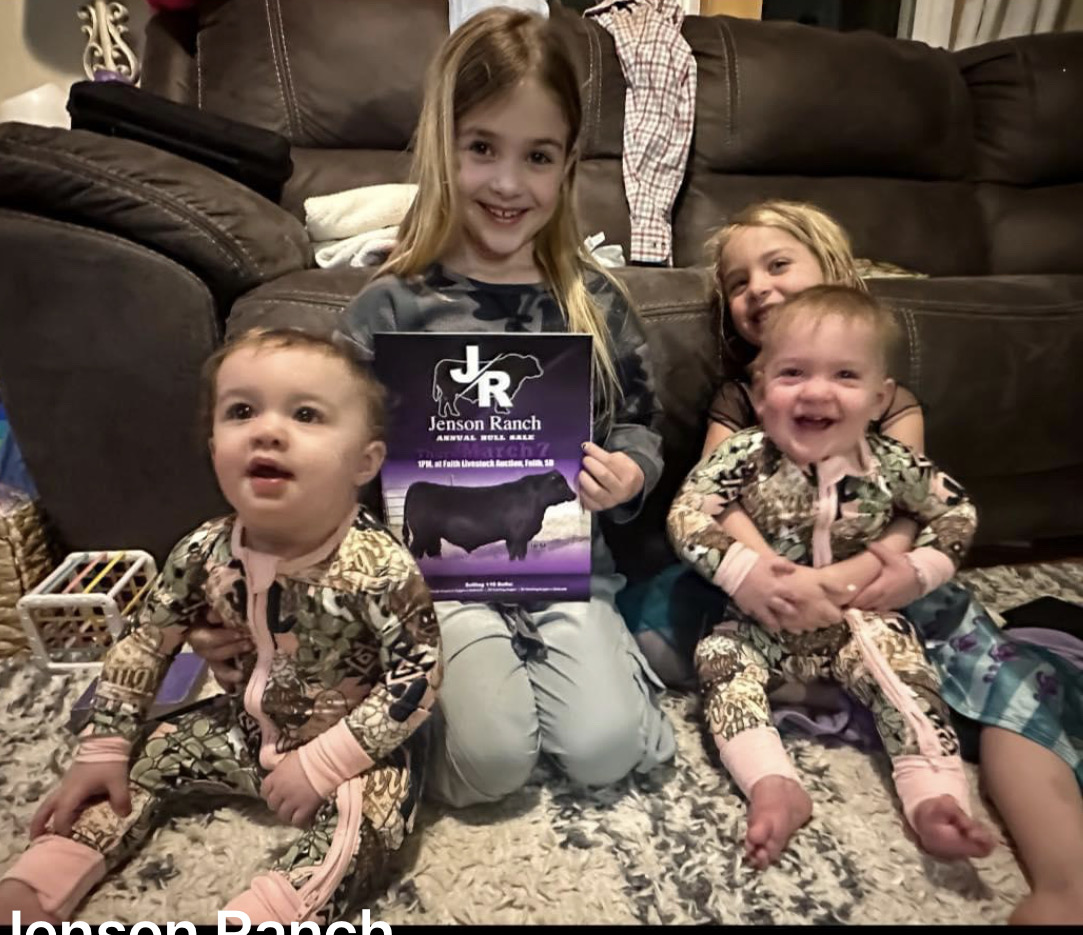
Homesteaded in 1896
To this day, the Jenson family runs cattle on the land Ron’s great-grandma, Johanna Jenson, homesteaded in 1896.
“She came over from Norway after she lost two husbands,” Louise shared. “She sent her three daughters to the U.S. to earn enough money to bring her and her two young sons to the U.S.”
Johanna’s youngest son, Hans, was only 9 when he emigrated to Harding County from Norway.
Hans and his wife, Bernice, raised four children on the family homestead, including Louise’s husband, Gene.
Louise loves history. She honors the Parks family, whose land she and Gene purchased for their ranchstead, with a small curated museum inside the old Ralph School House full of objects left behind by the Parks family and her in-laws.
“My husband started working for Bob and Mary Parks when he was 13 and worked for them all their lives,” Louise said. “I hated the idea of it all just being stored away.”
The ranch today
After high school, Ron said he had no interests outside of ranching. He enjoyed raising cattle and hay – not so much farming. So, when his dad, Gene, passed away in 2012, he converted all the farmland to hay ground.
“It was an economical choice for one thing, the hay markets are up and down, so it makes more sense to feed it to our own cattle,” Ron said. “And I would rather have more of a cattle-focused operation and Jace has more of an interest in cattle.”
When it was time for Jace to decide what he wanted to do after high school, Ron encouraged him to experience life off the ranch for a while. “I told him to work for someone else to get experience, meet people and have the experience of having people work for him,” Ron said. “This way things may look better when he came home.”
Jace said raising cattle on his family’s ranch is what he always wanted to do. “Growing up, I did not have many cows of my own, but it didn’t matter to me whose brand was on them, I liked working with cattle.”
The time Jace spent working construction and in the oil fields away from his family’s ranch strengthened his resolve. He determined to build his life and career on his family’s ranch.
“Working in the oil fields, the money is good, but I did not enjoy it. I wanted to be home,” Jace said. “For me, (being a cattle producer and in the seedstock business) it’s not about money. It is the love of the business. It is rewarding. The more we do, the more we improve things.”
When he returned to the ranch full time in 2014, improving herd genetics became his focus. He began AI’ing the herd, selecting genetics for calving ease, mothering ability, performance and functionality.
“It’s a slow process – the bull selection process and matings to see what works and what doesn’t,” Jace said. “You put a lot of work into all of it and the end result is rewarding.”
The family began selling bulls private treaty. Then, in 2020 the family had the opportunity to purchase Dave Lensegrav’s cow herd and expand the family’s seedstock business. “Dave had been our main bull source since the mid-80s. Lensegrav bulls added performance and mothering ability – Dave had a keen eye for genetics,” Jace explained.
When the family bought the Lensegrav herd, they asked Dave’s daughter, Kristi Birkeland, to stay on as a partner. Jace also asked his best friend and brother-in-law, Taz Olson, to partner in the seedstock business as well.
“We are childhood friends who grew up together. Our parents neighbored together so we did everything together,” Olson said. “We went to AI school together and when we would ask each other about genetic choices, I’d say about 80 percent of the time, we chose the exact same bulls.”
Valuing their friendship, Jace said they went into the business partnership with cautious optimism. “We talked and said that if something is wrong, we have to tell each other.”
“We both went into it open-minded,” Olson added. “I told Jace right away, one of us has to be the boss, and that’s you. We have always been good at communicating with each other, ever since we were little. We tell each other when we don’t think something is right or whatever. Our honesty helps out. We always know where each other stands.”
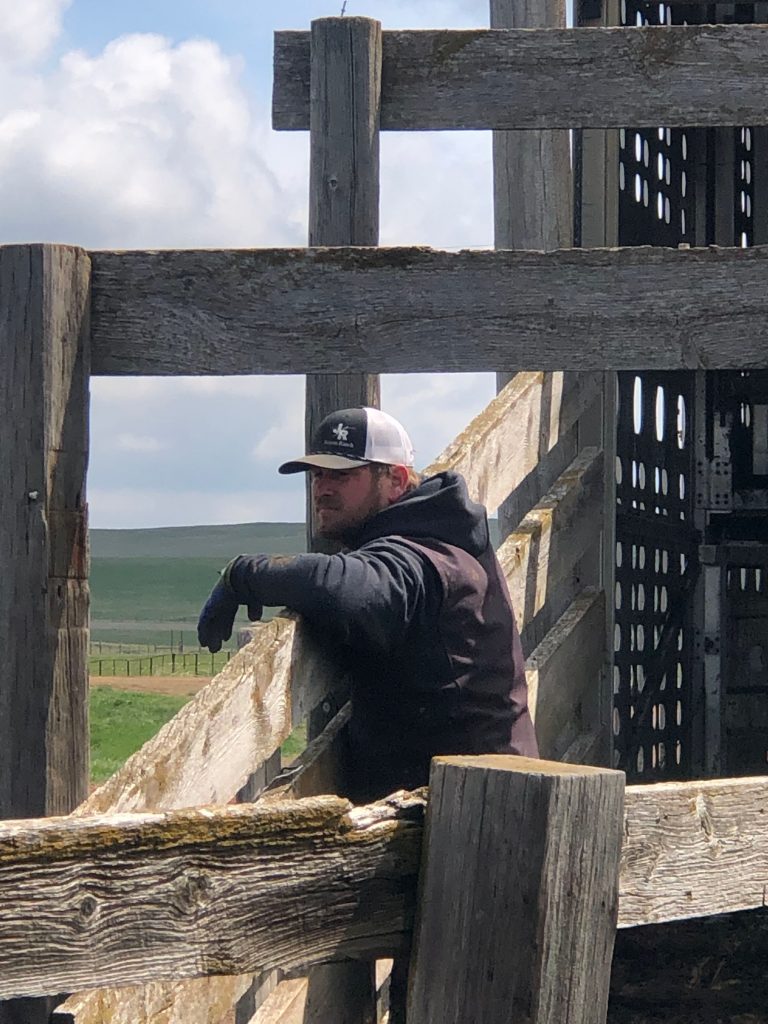
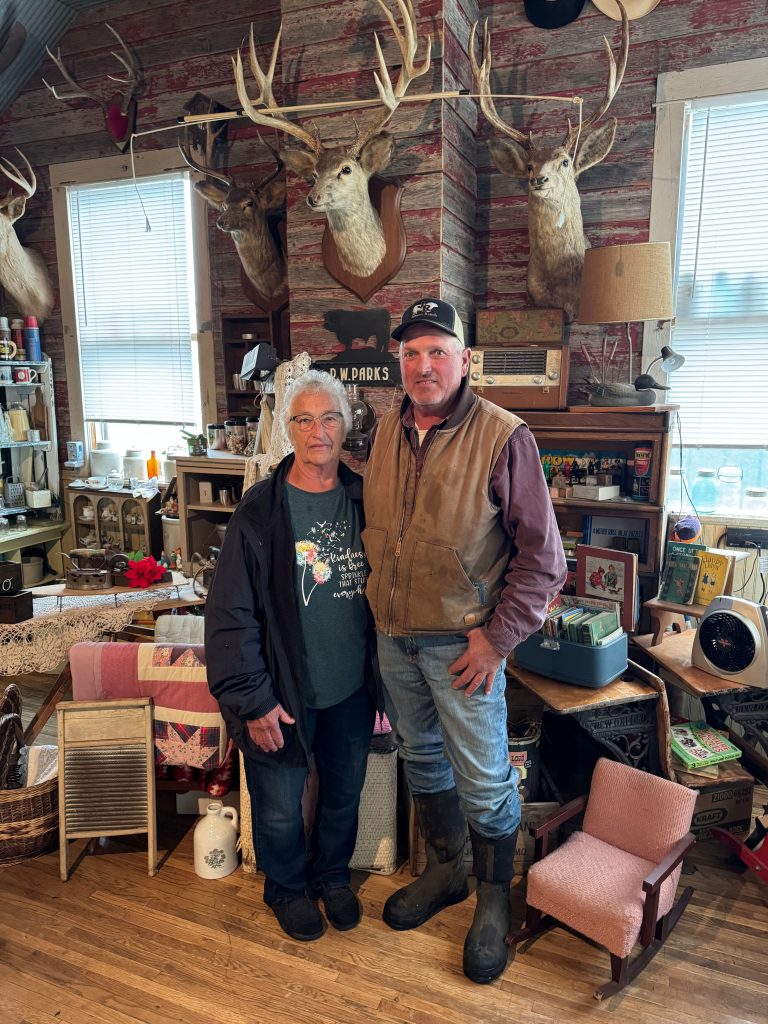
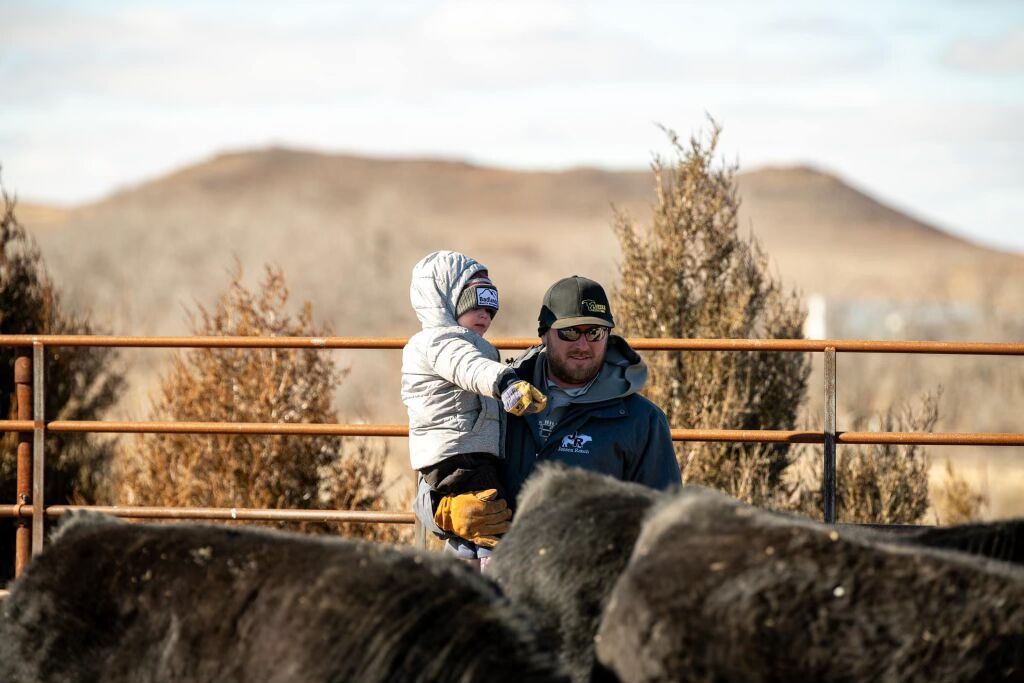
Today Ralph has a Bull Sale the First Friday in March
As the ranch transitioned from traditional cow/calf operation to a seedstock operation, the workload increased.
“It is very labor intensive and time consuming because there is a lot of sorting and a lot of paperwork,” Jace said of the DNA sample, birth weight and other genetic information the family collects on each calf born.
The family manages spring and fall calving herds.
“Everything we do with the spring calving herds, we repeat with the fall calving herds,” Jace said.
To help, Hughie and Julie Ulberg live and work full time alongside the family. After the family collects data on each calf, Jace pays someone to compile the data.
To make things even more complex, the Jensons’ cattle are not all pastured near the Ralph ranchstead. With various groups of cows and heifers, in different locations, receiving different reproductive protocols, Kami created a spreadsheet to help keep everyone organized – it includes project dates and times, which pasture they will work the cows or heifers or recips, how many will be there to help and perhaps most importantly, who is preparing the meal.
“We all take turns cooking the meals and we like to know when our day is because it’s not like we have ingredients real handy,” Kami explained.
After they took over ownership of the Lensegrav herd, the family continued Dave’s tradition of hosting a bull sale in Faith the first Friday each March. In 2025, the family began their own tradition and hosted the bull sale on their ranch.
“That was a big step,” Ron said.
About 200 cattle producers attended the in-person auction that was also livestreamed on DVAuction.
“We are grateful for our loyal customers who, like us have been buying these bulls for decades, and now we are expanding with some new customers,” Jace said. “There is a lot of weight when you are making genetic decisions that will impact not only our family’s ranch, but the ranch families who buy our seedstock. It’s a weight of sorts because we care. That is why we put so much time and effort into our breeding decisions.”
Jace and Taz said as their herd genetics improve, selection and culling decisions become more challenging.
Ron trusts Jace with the cattle decisions, but Jace said he is grateful Ron remains available if he needs advice. “It is nice to know he will not let me get too far out of line,” Jace said.
Taz added, “We are both proud to improve upon and continue the cattle legacy that our forefathers set up before us.”
